The circle of fifths is one of the most important diagrams within classical music. Not only can it help you learn your scales and their relationships to each other, but it is also invaluable when it comes to chord progressions, harmonic sequences and melodic sequences. In fact, we often refer to the chord progression that can be created using fifths as the ‘circle of fifths progression’. The circle of fifths progression was an extremely popular harmonic sequence within the Baroque era and can be seen throughout the music of Bach, Handel and Vivaldi.
Remember a harmonic sequence is simply a repetition of a pattern of chords. There are many different types of harmonic sequence but in this article we will specifically look at the circle of fifths sequence.
circle of fifths Descending Major Progression
The chords within a typical circle of fifths progression are as follows:
I – IV – viio – iii – vi – ii – V – I

This is the major version of the chord progression. For example, if we start with the C major triad as chord I, the chord progression would be as follows:
C major, F major, B diminished, E minor, A minor, D minor, G major and back to C major.

As you can see, this progression simply has a sequence of chords all a fifth away when in root position. For this progression we are using a pattern of descending fifths… If C is the first chord, count down five notes C B A G F. As you can see, our second chord will then be F major, continue counting backwards to work out the rest of the chords. F E D C B, B A G F E etc.
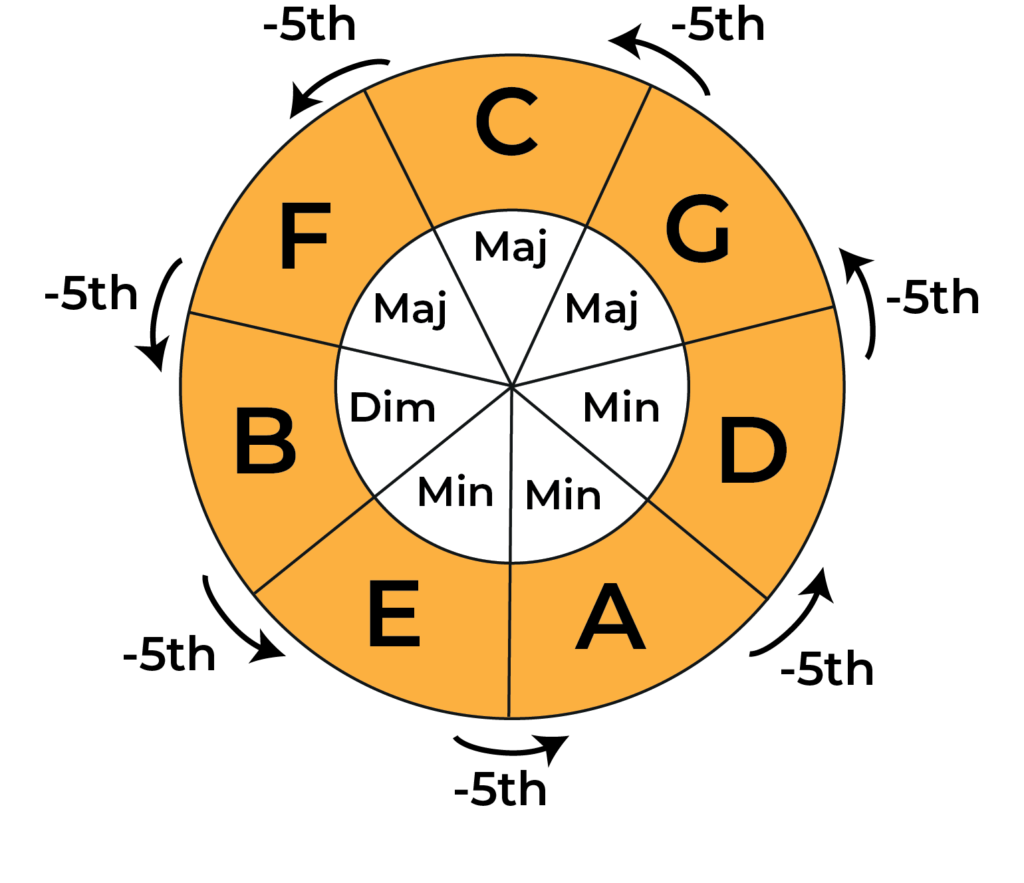
Now here is the progression with the notes of the scale.
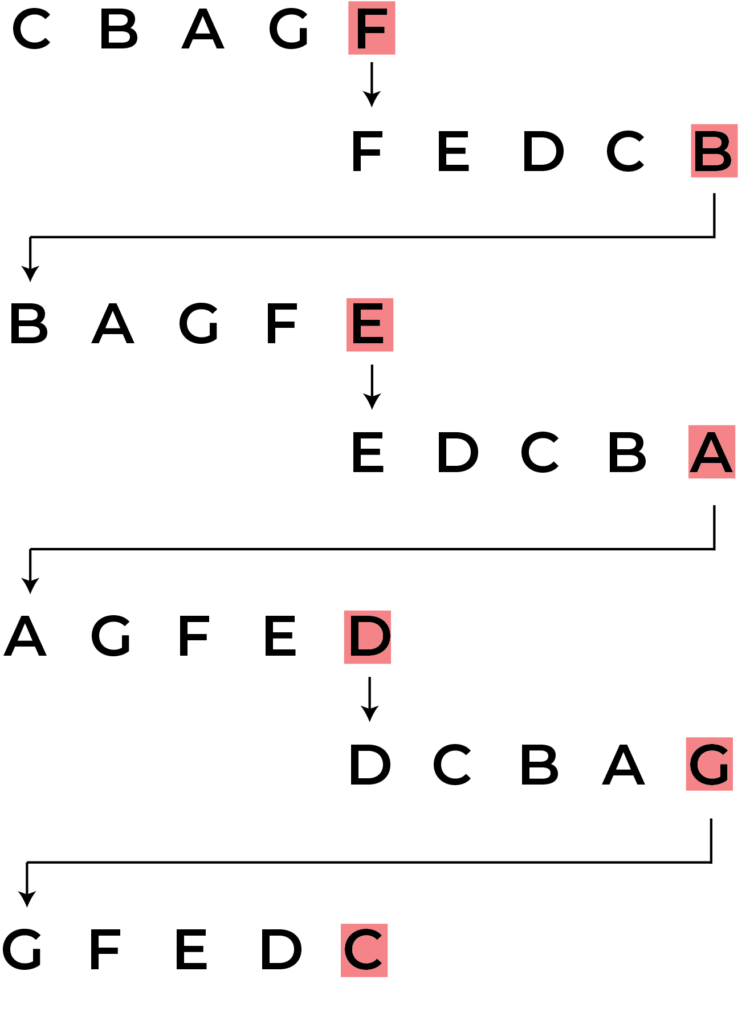
Circle of Fifths Descending Minor progression
You can see many examples of this progression throughout baroque music, particularly in its minor form. The minor circle of fifths progression is much more common than the major pattern. The minor pattern is as follows:
i, iv, VII, III, VI, iio, V, i

If we start in the key of D minor, the chord progression would be as follows:
D minor, G minor, C major, F major, Bb major, e diminished, a minor, d minor.
As you can see we get round the complete circle doing this as we end up back on our root note.

Here is the minor progression in D Minor diagram.
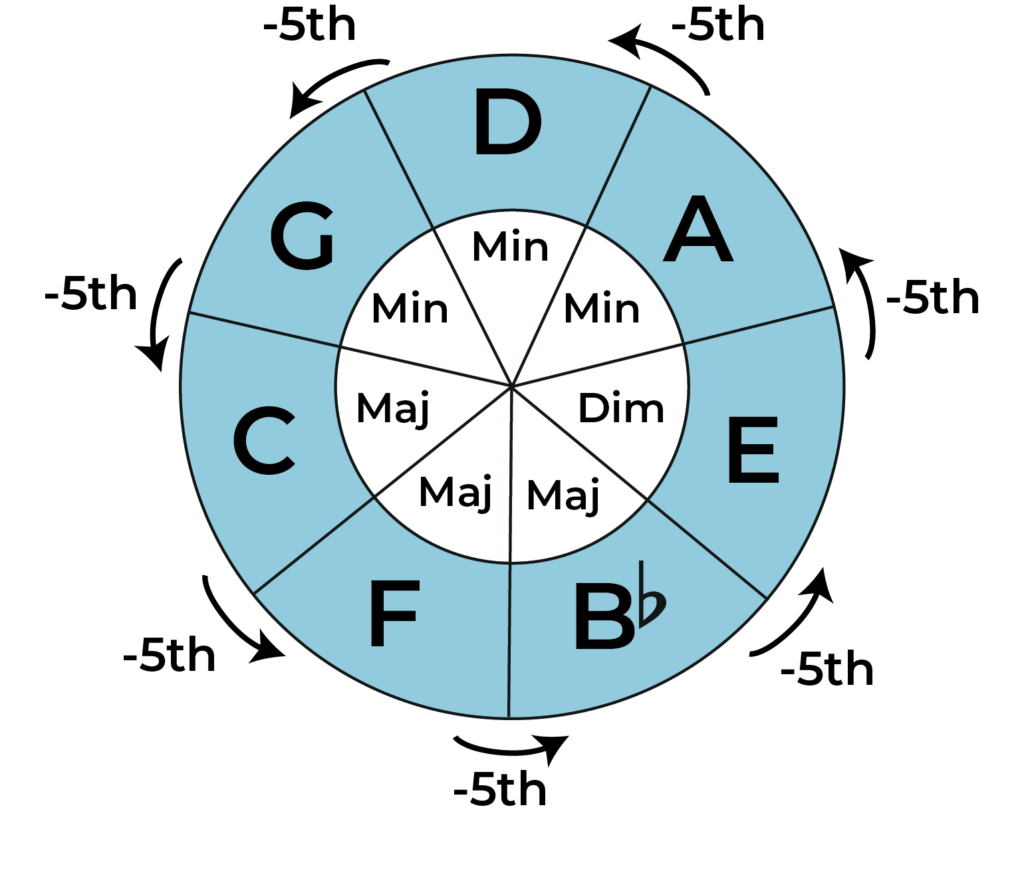
Here is the minor 5th progression with the notes of the D Minor scale.

Let’s look at an example. Vivaldi’s concerto op.3 no.8 first movement, this piece is in the key of A minor, but we can see a very clear example of a circle of fifths progression.

This piece is in A minor and you can see the scale pattern as follows:
a minor, d minor, G major, C major, F major, b diminished, E major, a minor
Again you can see the complete circle!

Within this piece, Vivaldi ensures not to raise the 7th note for chord VII and III meaning that we get the G major chord instead of a G# diminished chord and a C major chord instead of a C augmented. Doing this avoids awkward chords and this is common practice in the baroque period.
Obviously, Vivaldi is not the only composer to utilize the circle of fifths in his compositions. We can see examples of this littered throughout baroque music and beyond! Another great example is in Bach’s Brandenburg concerto.

Modulation
The circle of fifths can also be used to modulate. The sixth note in any major scale is the relative minor of that major scale, meaning that chord vi in a major scale is shared with the relative minor as chord I.
For example, chord vi in F major is a d minor chord. And then d minor is chord i in the d minor scale. D minor is the relative minor of F major!

You can see an example of this type of modulation in Vivaldi’s Four Seasons, the Spring Movement!

Shorter circle of fifths progressions
It is also possible to use the circle to create shorter progressions, you just need to move by intervals of a fifth.
Different progression could include:
II-V-I
This ii-v-i progression can be seen in almost all genres of music from classical music to popular music, but most of all in jazz from the 30s, 40s and 50s.
If in the key of C major the chords used would be:
D major – G major – C major
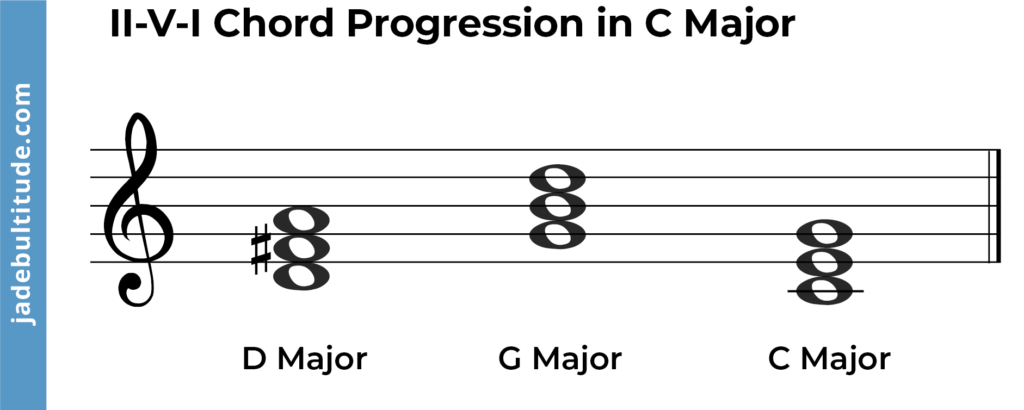
You can see a clear example of this in Duke Ellington’s, ‘Take The A Train’.

vi-ii-V-I
This is simply the last four chords of the circle progression.
If in the key of C major we would have the following chords:
a minor, d minor, G major, C major
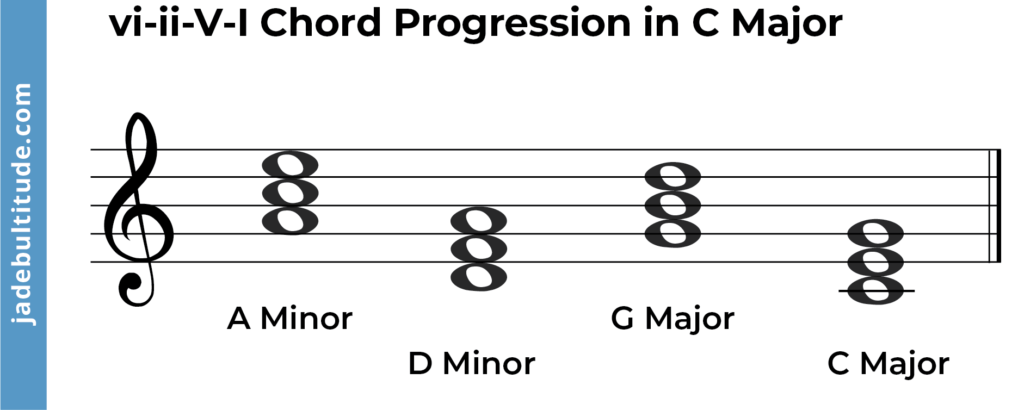
You can hear this in Jerome Kern, ‘All The Things You Are’.

I-vi-ii-V
This is an iteration of the progression above but just slightly reordered. This progression was sometimes referred to as the 1950s progression as it was prevalent during this time.
If in the key of C major, the chords used would be as follows:
C major, a minor, d minor, G major
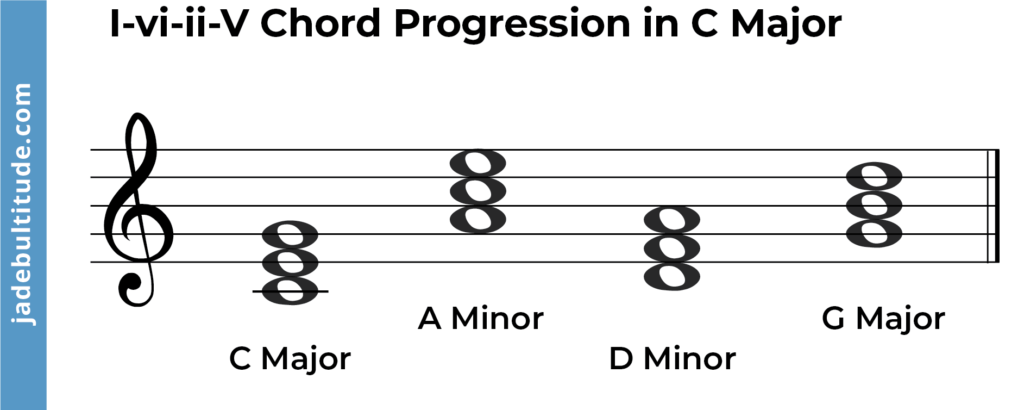
You can hear it clearly in Richard Rodgers, ‘Blue Moon’.
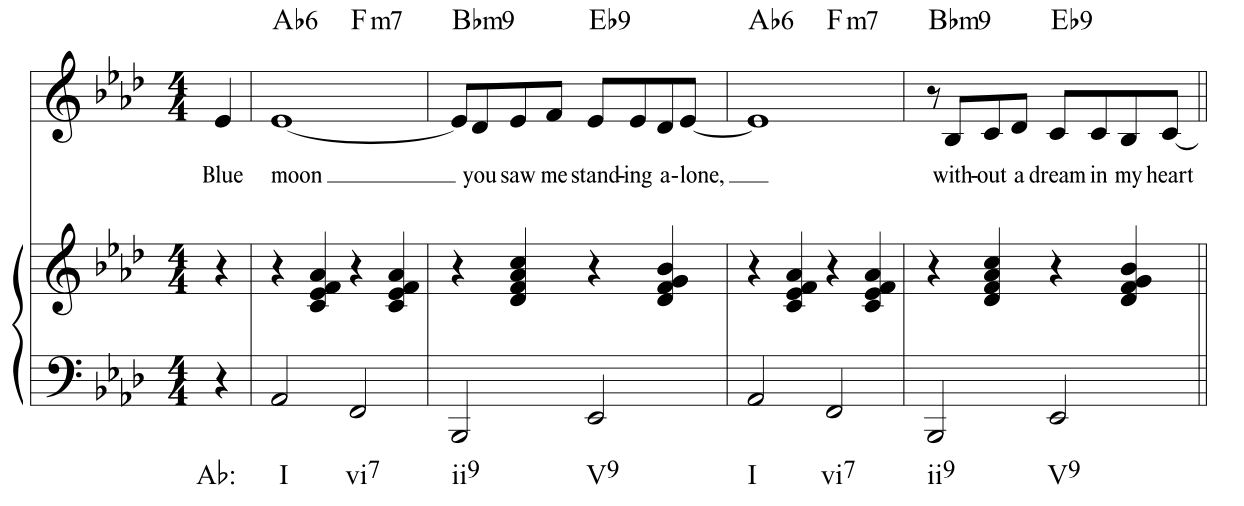
ii-V-I-vi
Another iteration of the above progressions. In this we have a perfect cadence sandwiched between the chords ii and vi. This vi chord is similar to a turnaround in jazz music.
If in the key of C major the chords would be:
d minor, G major, C major, a minor
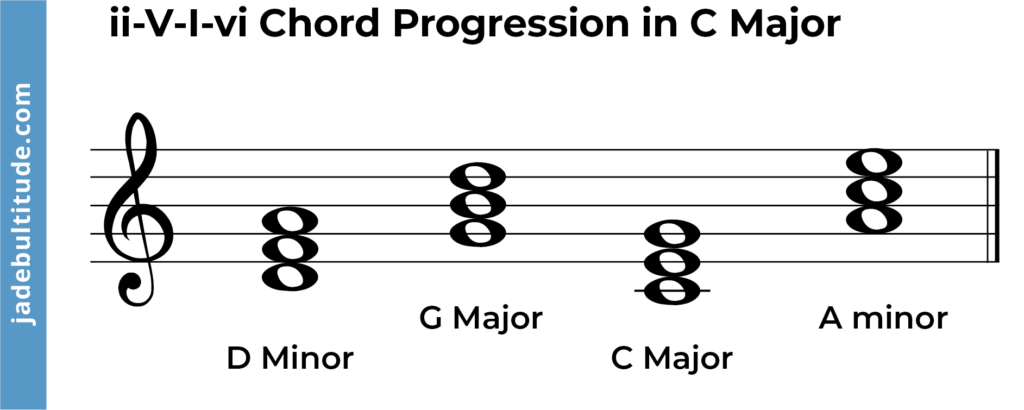
You can see an example of this progression in Tony Bennett, ‘Stranger in Paradise’.
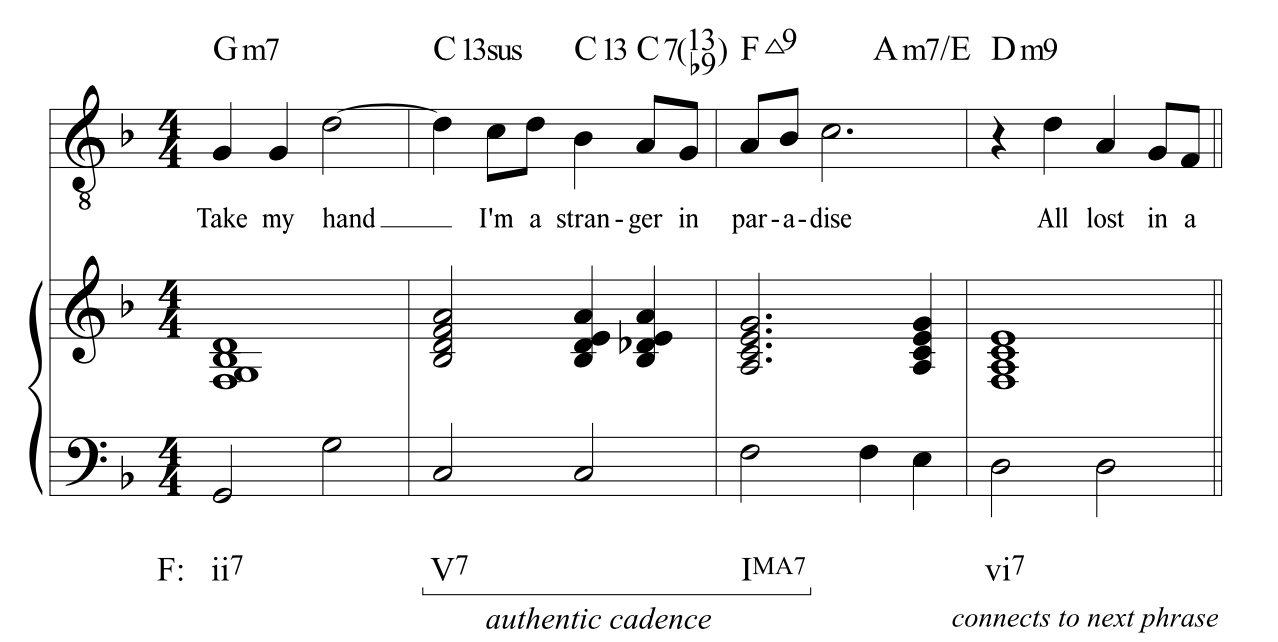
III-VI-II-V
This is another segment of the circle and is often used to loop throughout a song.
If in the key of C, the chords would be as follows:
E major, A major, D major, G major
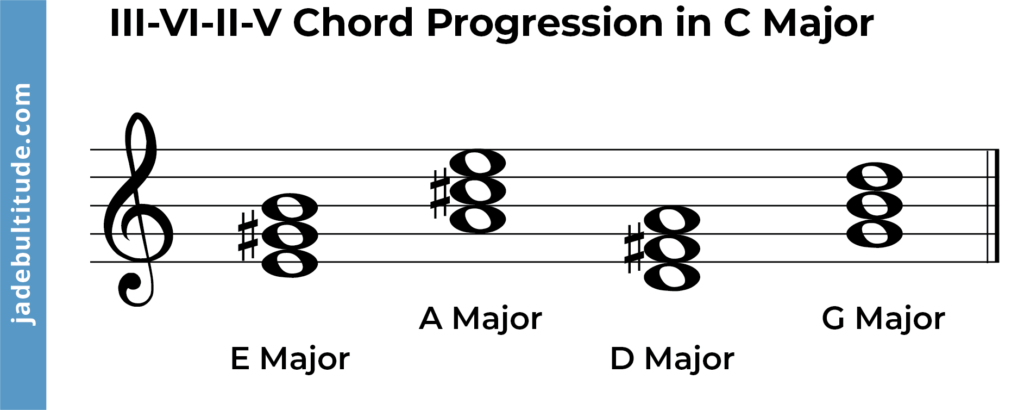
A great example of this is in the song ‘Never Gonna Give You Up’ by Rick Astley!

Circle of fifths progression chart
This is a useful chart to help you work out and use this famous chord sequence.
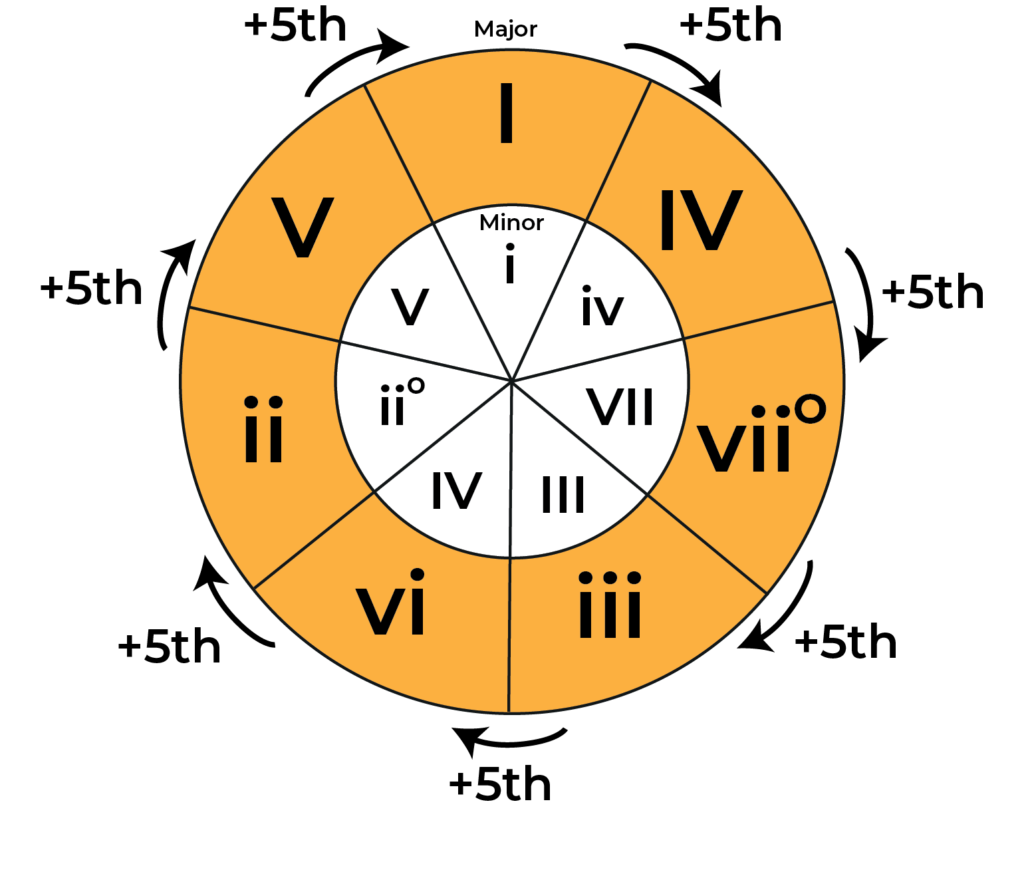
Building your knowledge of this common progression within music theory can really improve your harmony.
What’s next….?
- Learn more about the circle of fifths diagram with our complete guide to the circle of fifths.
- Learn about other popular chord progressions.
